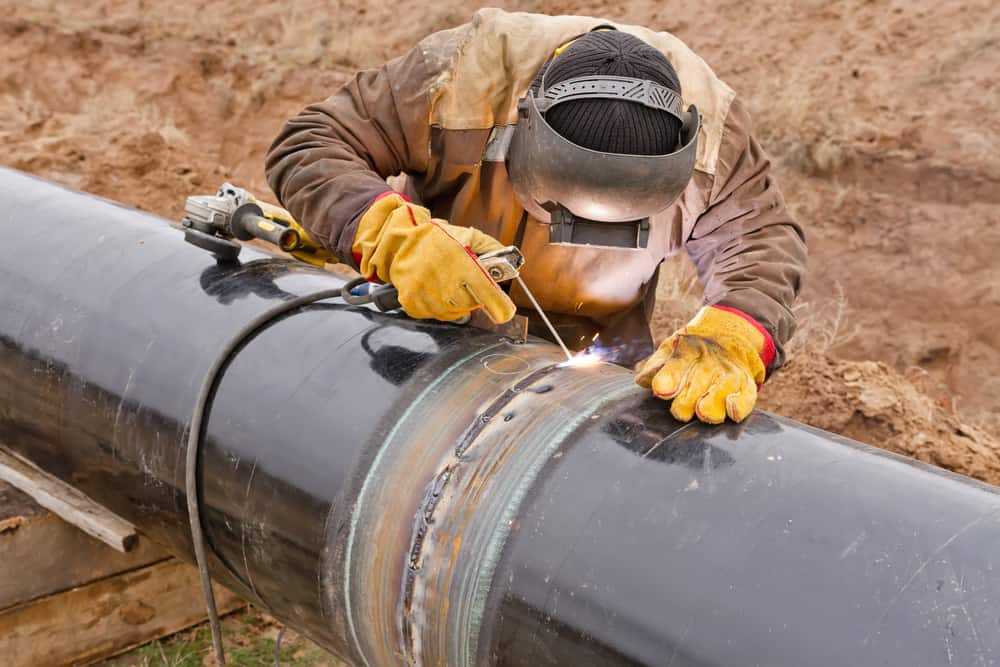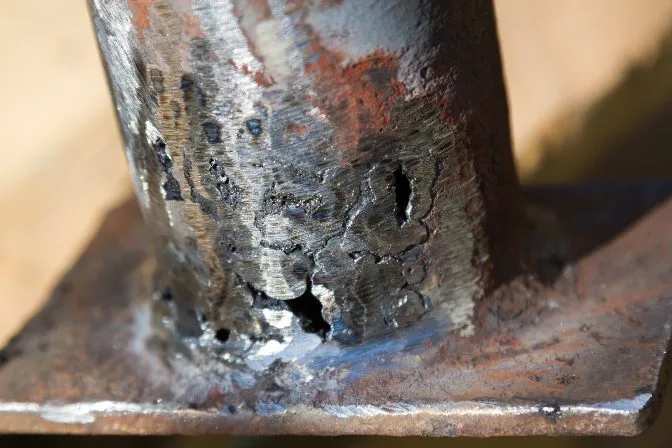A Comprehensive Overview to Welding Assessment Techniques and Ideal Practices for Quality Control in Construction Projects
Welding assessment serves as an essential pillar in guaranteeing the structural honesty and security of produced tasks. Using a variety of strategies-- varying from aesthetic evaluations to sophisticated techniques like ultrasonic and radiographic screening-- supplies crucial understandings right into possible defects that might weaken strength. Developing effective practices and a durable high quality administration system can boost compliance and reliability. However, the details of these methods and their application commonly elevate pertinent concerns about the tools and requirements essential for optimal end results. What particular approaches will be most effective in your projects?
Significance of Welding Inspection
Welding inspection is a critical part in making certain the honesty and safety and security of welded structures. The procedure involves an organized evaluation of welds to recognize any defects that may compromise the stamina and durability of the end product. Efficient assessment is vital not only for conformity with industry standards and laws however additionally for securing the health and wellness of workers and the public.

In addition, welding examination acts as a beneficial device for continuous renovation in construction processes. By determining recurring issues, companies can implement rehabilitative actions, causing boosted training for welders and far better total practices. Inevitably, prioritizing welding assessment cultivates a society of quality control, ensuring that jobs fulfill both client assumptions and governing demands. This positive approach is essential for attaining excellence in welding and fabrication.
Typical Welding Evaluation Methods
Numerous methods are utilized to evaluate welds, each customized to identify specific kinds of issues and ensure top quality. Amongst the most commonly utilized approaches are aesthetic evaluation, ultrasonic testing, radiographic testing, magnetic bit screening, and color penetrant screening.
Aesthetic evaluation is the most straightforward approach, enabling assessors to identify surface irregularities such as splits, porosity, and damaging. Ultrasonic screening employs high-frequency sound waves to discover inner problems, offering a detailed assessment of weld stability. Radiographic screening uses X-rays or gamma rays to produce pictures of the weld, exposing inner defects that are not noticeable to the naked eye.
Magnetic fragment testing is particularly efficient for ferromagnetic materials, determining surface area and near-surface defects by applying magnetic fields and using great particles that show abnormalities. Color penetrant screening involves applying a colored color to the weld surface area, which leaks right into cracks and is exposed under ultraviolet light, making it very easy to spot flaws.
Each of these methods plays a crucial role in preserving welding quality, and the selection of an appropriate approach depends upon the certain requirements of the fabrication project, including product type, weld configuration, and the wanted degree of inspection.
Crucial Inspection Devices


Determining devices, including calipers, gauges, and rulers, are vital for verifying measurements and resistances. These instruments help make certain that welds satisfy the required specs for toughness and sturdiness. In addition, ultrasonic screening tools are employed to identify internal defects without compromising the stability of the weld. This non-destructive screening method is vital for identifying issues that may not be visible on the surface.
One more essential tool is the firmness tester, which assesses the mechanical homes of a weld and determines its suitability for particular applications. Welding inspection software program aids in recording searchings for, assisting in data analysis, and making sure conformity with sector requirements. Together, these necessary evaluation devices create an extensive collection that supports the welding assessment process, eventually adding to the top quality assurance of manufacture jobs.
Finest Practices for Quality Control
In the search of high quality assurance, applying ideal practices is vital for accomplishing trusted and consistent welding results. Developing an extensive welding high quality administration system (WQMS) is fundamental. This system needs to encompass defined procedures, criteria, and documents practices that guide every stage of the welding process.
Routine training and certification of welding workers are vital. Skilled welders with updated understanding of methods and precaution add significantly to quality. Conducting pre-welding examinations ensures that materials and tools meet defined standards, decreasing the probability of flaws.
Incorporating real-time tracking throughout the welding read here procedure enables immediate detection of irregularities, enabling corrective actions to be taken quickly. Post-welding assessments, consisting of visual checks and non-destructive screening (NDT), are essential in validating weld stability and compliance with industry standards.
Furthermore, keeping precise documents of inspections, weld specifications, and corrective activities promotes a culture of responsibility and constant enhancement. Involving stakeholders in normal top quality evaluations can likewise improve the overall effectiveness of quality control actions. By adhering to these best techniques, companies can significantly raise their welding top quality guarantee initiatives, thus ensuring task success and customer contentment.
Enhancing Safety and Compliance
Achieving high requirements in welding quality guarantee naturally straightens with the critical of boosting security and compliance within the market. Effective welding inspection strategies are vital in guaranteeing and recognizing prospective risks that all procedures follow governing standards. These techniques not just offer to maintain structural integrity yet additionally secure the wellness and safety of personnel included in manufacture projects.
Implementing extensive inspection procedures, such as aesthetic evaluations, non-destructive screening (NDT), and thorough documents, establishes a society of security and accountability. Training welders and examiners in existing safety guidelines and finest methods is important. This makes certain that all employee know potential dangers and are geared up to alleviate them.
Moreover, compliance with market standards, such as those established by the great site American Welding Society (AWS) and the International Organization for Standardization (ISO), is non-negotiable. Routine audits and assessments aid identify voids in security procedures and promote continual enhancement - Welding Inspection Milwaukee. Inevitably, a dedication to enhancing safety and conformity not just promotes a safer working environment however also causes exceptional high quality results and minimized responsibility for organizations taken part in welding construction
Final Thought

Welding assessment serves as a basic column in making sure the architectural integrity and security of made tasks.Welding assessment is an important element in guaranteeing the stability and safety and security of bonded structures. Inevitably, prioritizing welding inspection cultivates a culture of quality guarantee, making sure that projects fulfill both client assumptions and regulatory needs. With each other, these important examination tools create a detailed collection that sustains the welding evaluation procedure, inevitably contributing to the high quality assurance of construction projects.
In final thought, reliable welding examination is necessary for guaranteeing the structural integrity and safety of made projects. Welding Inspection Milwaukee.